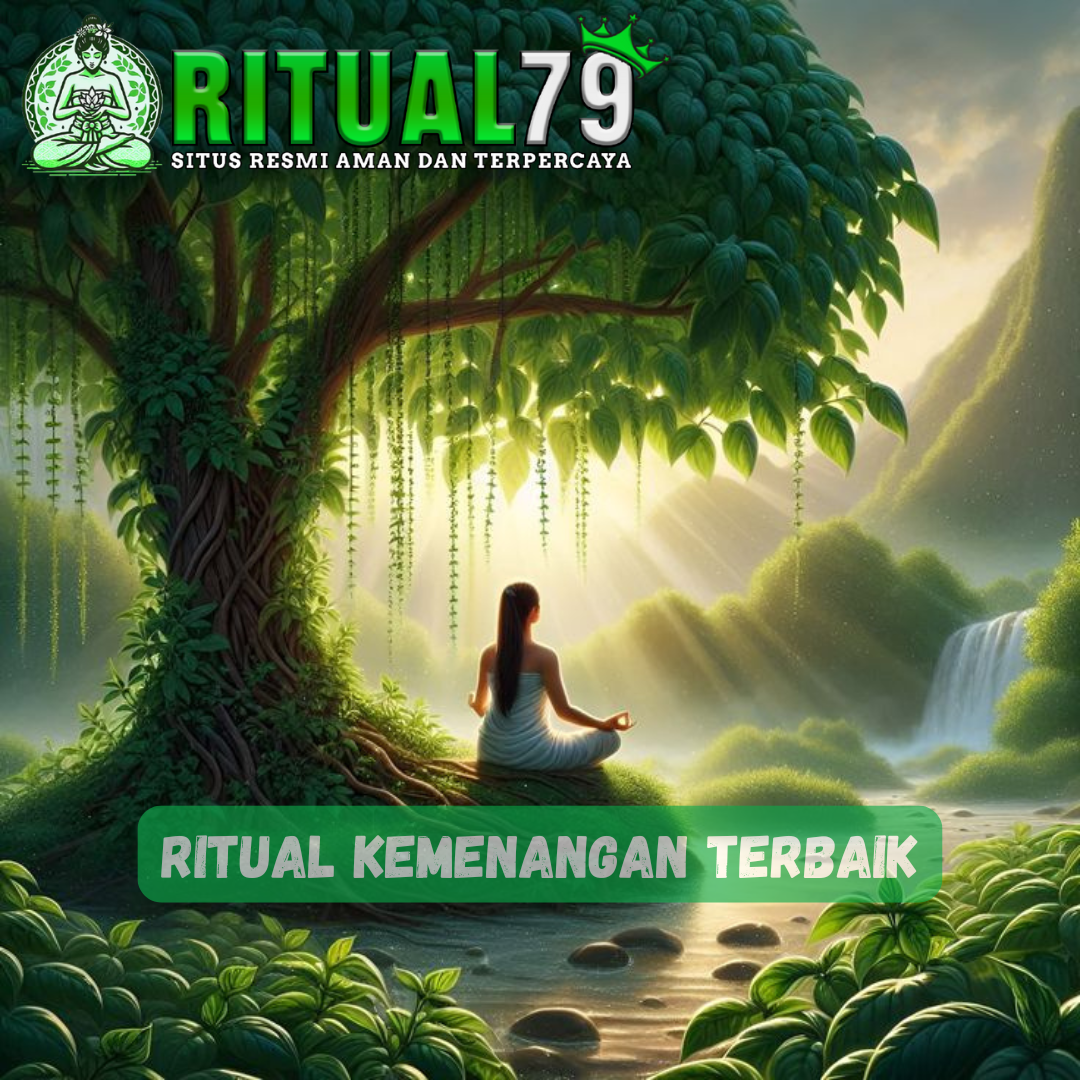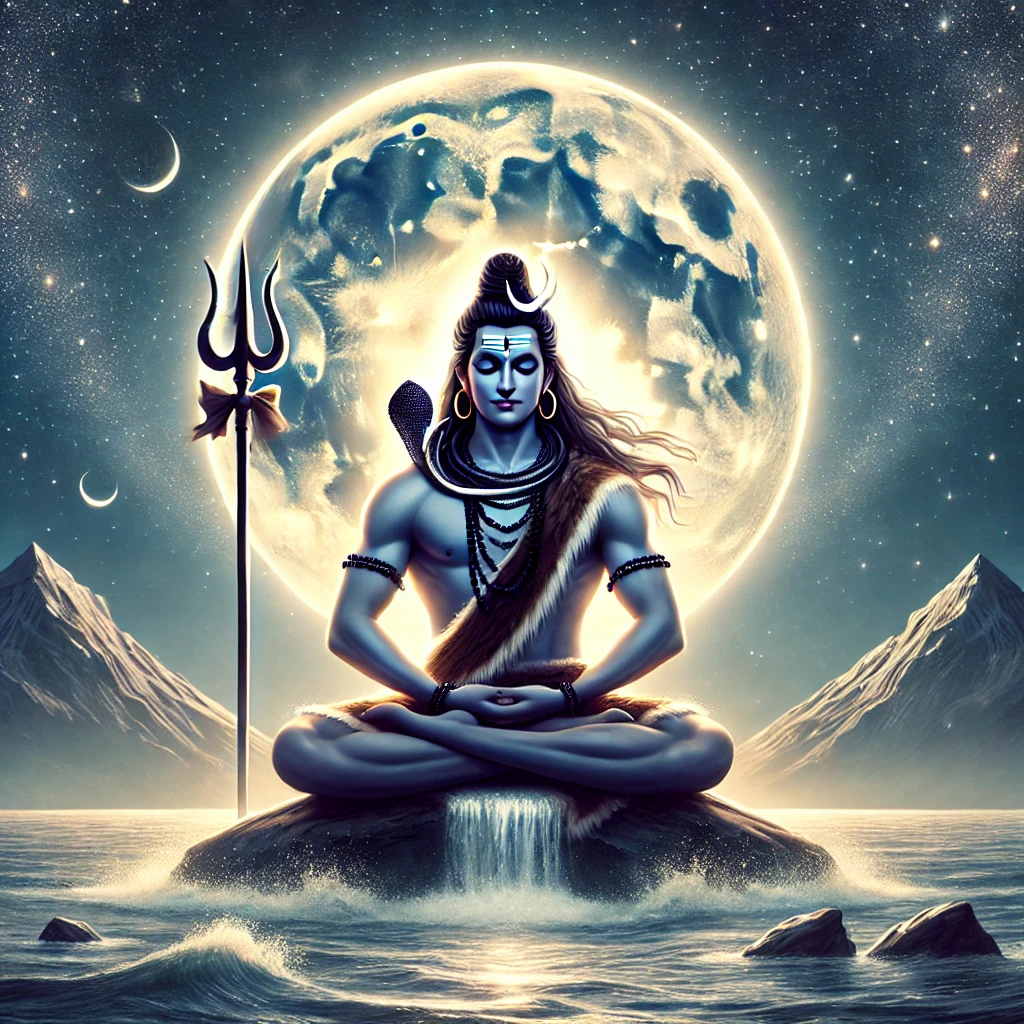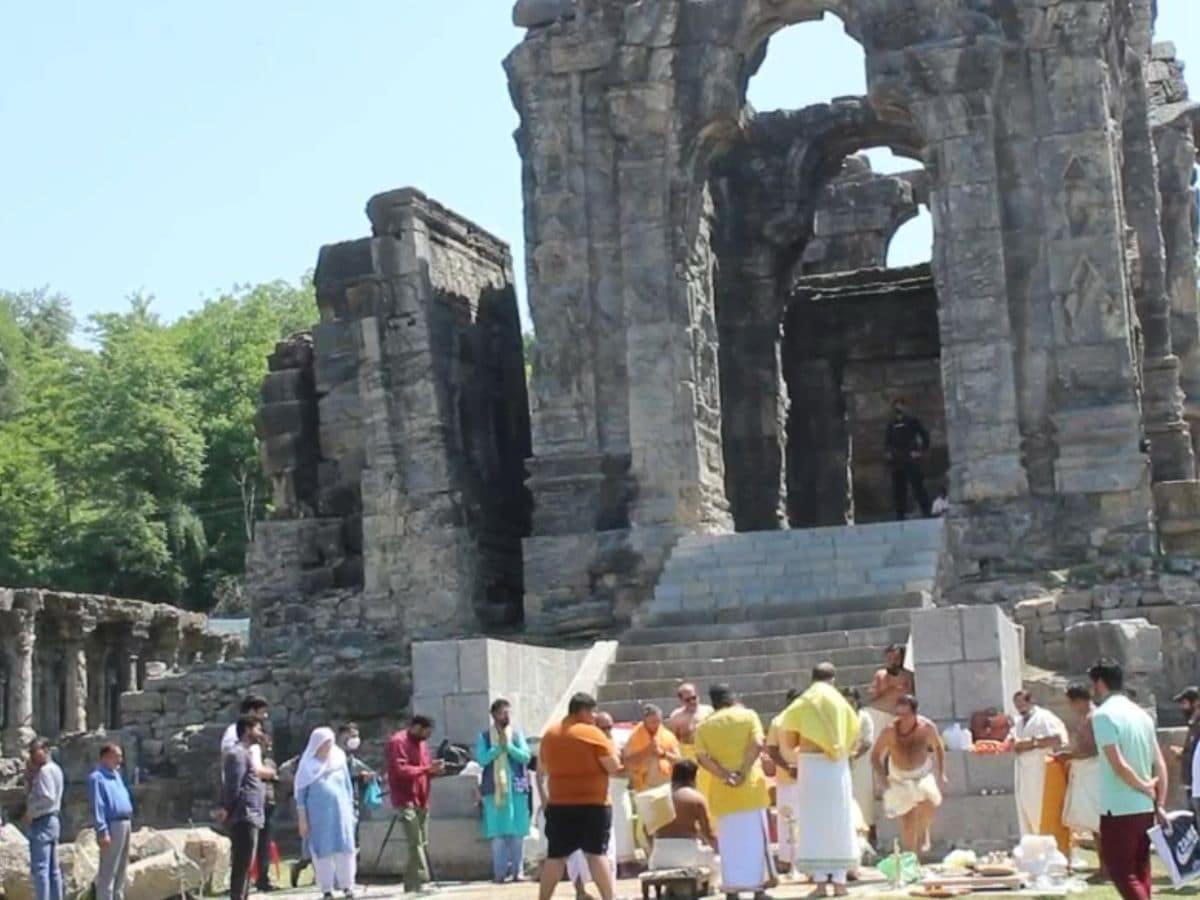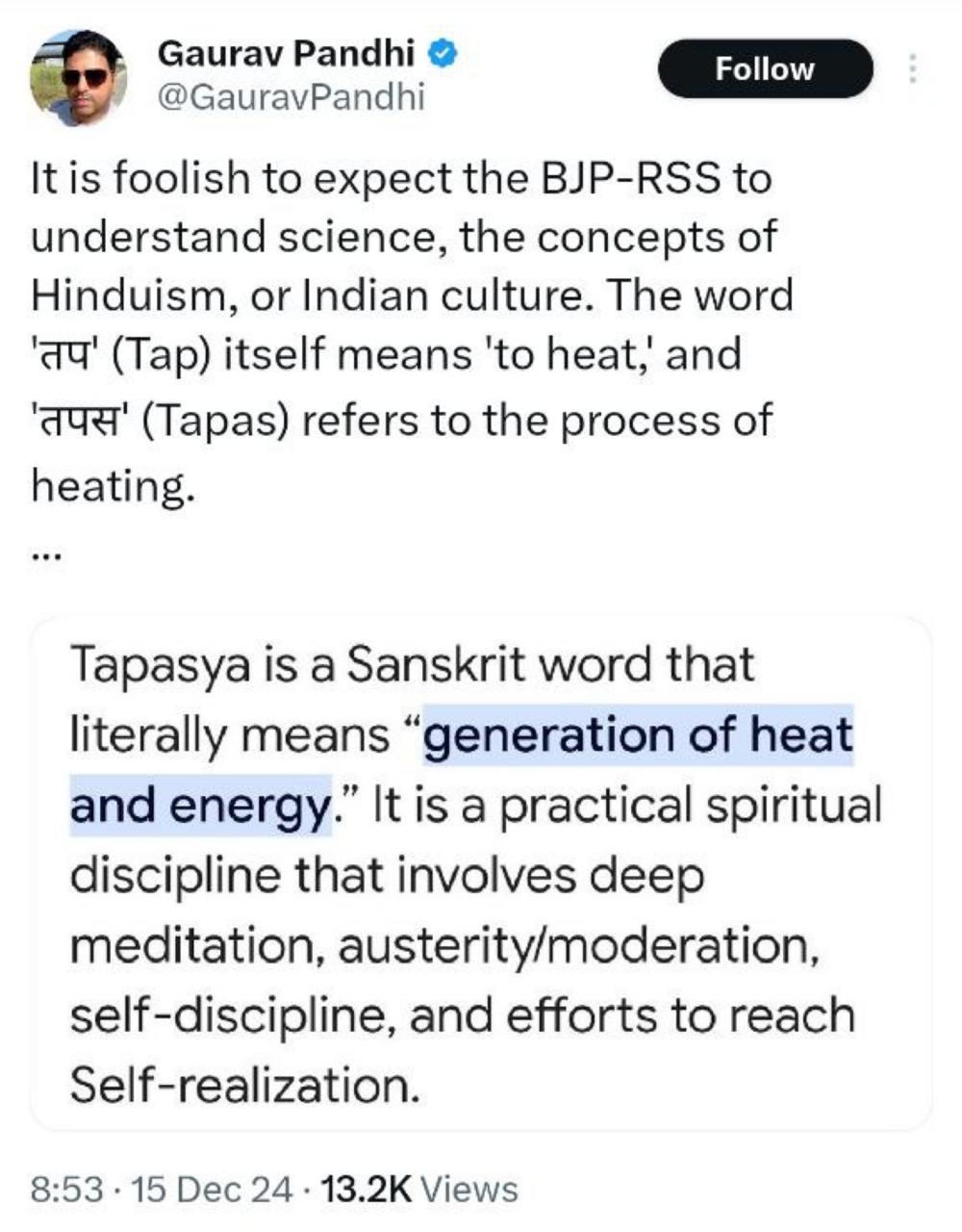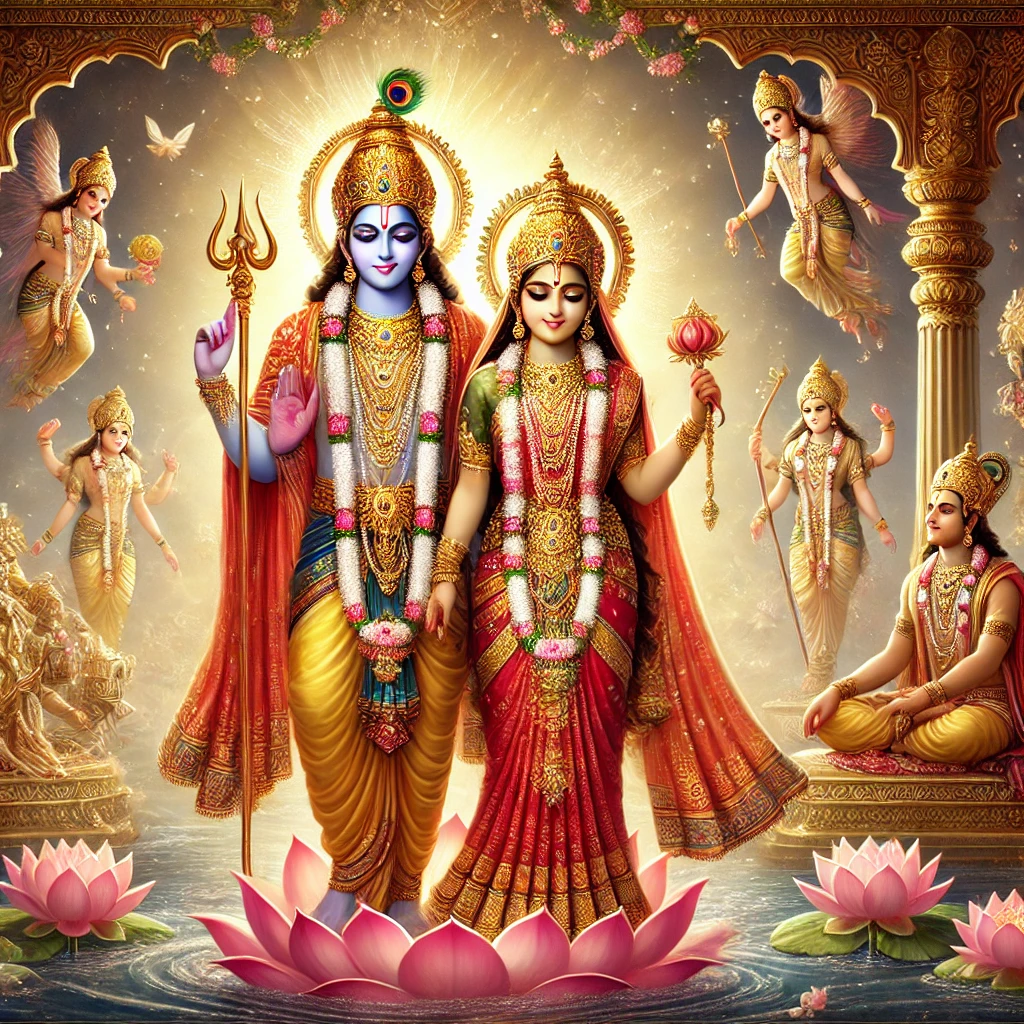This should shake the core of all Bharatiyas:
If You Divide, You Perish: The Truth Behind the Slogan ‘Batoge To Katoge’
In a recent debate, anchor Amitabh Aghnihotri took on a panelist who accused the slogan "Batoge To Katoge" of promoting division and hatred. With conviction and a deep understanding of India’s history, Aghnihotri passionately responded, pointing out the layers of pain, resilience, and patience of the majority Hindu community. His words resonated with a nation that has endured centuries of invasions, partitions, and relentless struggles, especially when it comes to preserving its cultural heritage and places of worship.
Aghnihotri asked, “Why should there be no anger?” Reflecting on a painful legacy dating back to the 8th century when Islamic invasions began, he reminded the audience of the horrific accounts of temple destructions, atrocities against Hindu communities, and the brutal Partition of 1947. He spoke of how trains crossed from Pakistan filled with lifeless bodies, the blood of innocent people staining a generation forever. “Did you not see that?” he demanded. This was not a hatred-fueled grievance but an unhealed wound—a painful reminder of a brutal history etched in collective memory.
He moved to a more recent chapter in history: the plight of Kashmiri Pandits, a community systematically persecuted, forced to flee their homes in fear for their lives. Aghnihotri spoke of the brutality and heartbreak of families torn apart, homes abandoned, and the inability to reclaim what was lost. “Eighty-five percent of this country is Hindu, yet they had to watch their own people—Pandits of Kashmir—being massacred and exiled. And now, you ask why there should be no anger?” His words echoed the frustration of a people who have watched injustice unfold, who have witnessed their own sufferings silenced or minimized.
Aghnihotri questioned why, in a country with a vast Hindu majority, it took five centuries to rebuild the Ram Mandir, a structure that stood not just as a place of worship but as a symbol of faith and resilience. He asked, “Show me one example in the world where a majority waited this long to rebuild their place of worship.” This delay, he suggested, was a symptom of deeper issues—a hesitancy to allow the majority to reclaim their historical and spiritual spaces.
He continued, with raw emotion, “A son who has lost his mother and father knows the depth of that pain.” He spoke for millions who have experienced loss, not only on a personal level but as part of a cultural identity, stolen or desecrated over generations. “These invaders came to Bharat not only to plunder wealth but to break its spirit, to shatter its identity,” he reminded the panelist. “They placed our deities on the steps of their mosques, a symbolic degradation of what we held sacred. Why should this be forgotten or forgiven without a true acknowledgment?”
In his response, Aghnihotri challenged the panelist's refusal to accept a straightforward demand: why should Hindus not be allowed three temples, as a token of justice in a land rich with their heritage? He made it clear that justice cannot be selective. It must be inclusive of the past’s wounds to allow true healing and reconciliation.
The slogan "Batoge To Katoge" is not a threat but a call to unity, Aghnihotri argued. “What’s wrong with reminding people that if we continue to be divided, we will perish? Isn’t this a message meant to unite, not divide?” In his closing remarks, he drove home the point that it is every citizen’s duty to resolve historical grievances in a manner that is fair and just for all, emphasizing that the path to unity lies in acceptance and understanding.
Aghnihotri’s response was not just an argument in a debate; it was a powerful voice for those who feel unheard, urging the country to remember its history, to learn from it, and to move forward together. It’s not about division but about seeking the truth and justice that every citizen deserves, the kind of justice that heals old wounds and forges a path toward a unified Bharat.
This should shake the core of all Bharatiyas:
If You Divide, You Perish: The Truth Behind the Slogan ‘Batoge To Katoge’
In a recent debate, anchor Amitabh Aghnihotri took on a panelist who accused the slogan "Batoge To Katoge" of promoting division and hatred. With conviction and a deep understanding of India’s history, Aghnihotri passionately responded, pointing out the layers of pain, resilience, and patience of the majority Hindu community. His words resonated with a nation that has endured centuries of invasions, partitions, and relentless struggles, especially when it comes to preserving its cultural heritage and places of worship.
Aghnihotri asked, “Why should there be no anger?” Reflecting on a painful legacy dating back to the 8th century when Islamic invasions began, he reminded the audience of the horrific accounts of temple destructions, atrocities against Hindu communities, and the brutal Partition of 1947. He spoke of how trains crossed from Pakistan filled with lifeless bodies, the blood of innocent people staining a generation forever. “Did you not see that?” he demanded. This was not a hatred-fueled grievance but an unhealed wound—a painful reminder of a brutal history etched in collective memory.
He moved to a more recent chapter in history: the plight of Kashmiri Pandits, a community systematically persecuted, forced to flee their homes in fear for their lives. Aghnihotri spoke of the brutality and heartbreak of families torn apart, homes abandoned, and the inability to reclaim what was lost. “Eighty-five percent of this country is Hindu, yet they had to watch their own people—Pandits of Kashmir—being massacred and exiled. And now, you ask why there should be no anger?” His words echoed the frustration of a people who have watched injustice unfold, who have witnessed their own sufferings silenced or minimized.
Aghnihotri questioned why, in a country with a vast Hindu majority, it took five centuries to rebuild the Ram Mandir, a structure that stood not just as a place of worship but as a symbol of faith and resilience. He asked, “Show me one example in the world where a majority waited this long to rebuild their place of worship.” This delay, he suggested, was a symptom of deeper issues—a hesitancy to allow the majority to reclaim their historical and spiritual spaces.
He continued, with raw emotion, “A son who has lost his mother and father knows the depth of that pain.” He spoke for millions who have experienced loss, not only on a personal level but as part of a cultural identity, stolen or desecrated over generations. “These invaders came to Bharat not only to plunder wealth but to break its spirit, to shatter its identity,” he reminded the panelist. “They placed our deities on the steps of their mosques, a symbolic degradation of what we held sacred. Why should this be forgotten or forgiven without a true acknowledgment?”
In his response, Aghnihotri challenged the panelist's refusal to accept a straightforward demand: why should Hindus not be allowed three temples, as a token of justice in a land rich with their heritage? He made it clear that justice cannot be selective. It must be inclusive of the past’s wounds to allow true healing and reconciliation.
The slogan "Batoge To Katoge" is not a threat but a call to unity, Aghnihotri argued. “What’s wrong with reminding people that if we continue to be divided, we will perish? Isn’t this a message meant to unite, not divide?” In his closing remarks, he drove home the point that it is every citizen’s duty to resolve historical grievances in a manner that is fair and just for all, emphasizing that the path to unity lies in acceptance and understanding.
Aghnihotri’s response was not just an argument in a debate; it was a powerful voice for those who feel unheard, urging the country to remember its history, to learn from it, and to move forward together. It’s not about division but about seeking the truth and justice that every citizen deserves, the kind of justice that heals old wounds and forges a path toward a unified Bharat.




